The majority of traditional open canoes (and especially those modelled on classic 'Prospector' lines) have been designed to work well with a wide variety of loadings and in a range of environments… but everything about canoe design is a compromise, from tracking to manoeuvrability and from stability to efficiency…
DECISIONS WITH CONSEQUENCES?
Choosing a Canoe should perhaps start with our Smile Test, which looks at which canoes will put the biggest smiles on our faces at key moments and keep us smiling when we have loads more experience.
We might also look at guides to Choosing a Touring Canoe and Choosing a "Trad" Canoe. Each one looks at why we might value one set of compromises over another.
Eventually, we've get a rough idea what we want - but then, we're still left with major decisions to make about size, shape and more… and each such decision is a trade-off, with consequences!
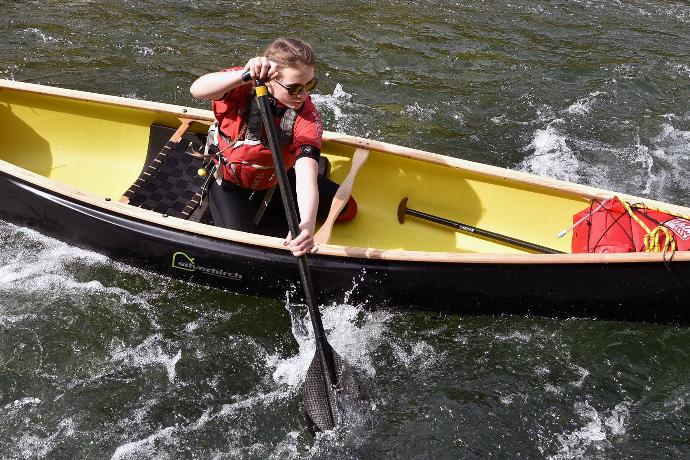
Fortunately, we don't need to consider every linked factor in boat design when we're choosing a canoe. In this series of linked blogs, we concentrate on key considerations. These include capacity, length, shape below the waterline and shape above the waterline.
An experienced retailer or coach should be able to guide attention to the more important options and trade-offs which will arise once we're clear enough about what we want from a canoe… but such guidance can also reveal more about the experiences, preferences and biases of the retailer or coach than about the choice any of us might really face!
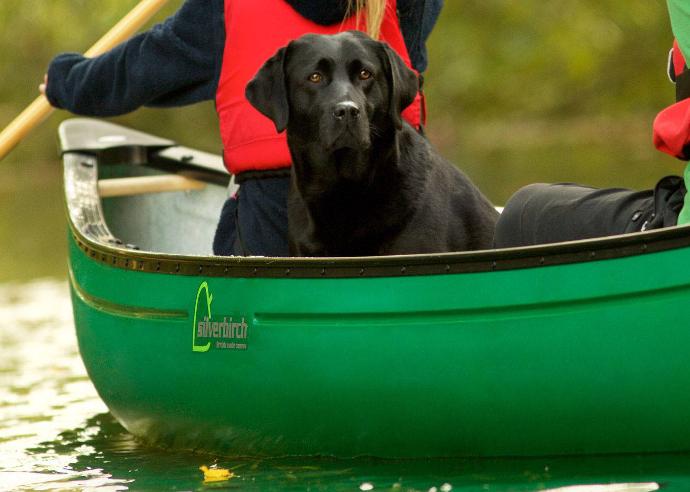
CAPACITY - A FLEXIBLE CONSTRAINT?
Accepting that all canoes handle differently depending on the load we put in them, and that "optimal" loading is a bit subjective… we may be grateful for an old-timer's rule-of-thumb which works for more "Prospector-like" open canoes:
When we're on our own, we might prefer a canoe that sits between the 2" (50mm) and 4" (100mm) waterlines.
If we're out with others, paddling tandem, we might aim at between the 3" (75mm) and 5" (125mm) waterlines.
For more on this, see The Capacity of a Traditional Canoe.
In practice, capacity rarely determines what canoe might suit us. For example, even if we have a clear notion that we want a tandem canoe which will work well for two adults for day trips and overnight canoe-camping trips, we might go for a shorter, wider canoe with a flat bottom where others will go for a longer canoe with a more rounded hull which is narrower at the waterline - and the same is true with canoes for solo use.
If we mostly want to load our canoe fairly similarly (e.g. one adult and day-tripping kit, or two adults plus kids and camping gear)… choosing an appropriately sized canoe is perhaps not so difficult… but when we want One Boat To Rule Them All (to be OK for almost anything)… we can easily end up with a canoe that does NOTHING very well!
LONG ENOUGH… BUT NOT TOO LONG!
One understandable instinct, when choosing a canoe, is to go for a slightly larger model because we want to be sure it's "big enough"… especially if we have aspirations to try bigger trips - but optimums exist:
If we mostly paddle solo, perhaps at a gentle walking pace such as 3mph, a 14' (4.25 m canoe) is likely to be efficient for us, and anything longer is going to be harder work both on and off the water;
If we mostly paddle tandem, we're likely to see a 16' (4.88m) canoe as a minimum, and if we're going to routinely clip along at more than a brisk walking pace, we might consider 17'6" (5.3m) or more;
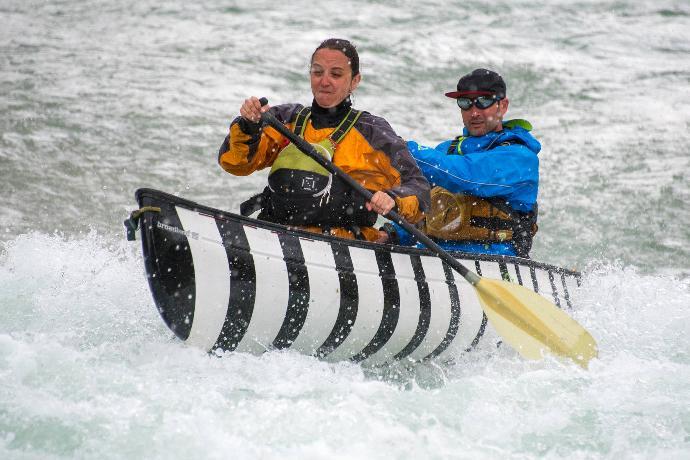
We might go to a longer canoe for additional load capacity, space and flexibility, or because this works best for our preferred canoe-sailing rig, but we might also go longer to accommodate "recurved stems" (shape in the ends of the canoe). We might go shorter to reduce boat weight and for ease-of-handling when out solo paddling in a stiff breeze, or because we expect to find the shorter canoe is more playful or manageable on our favourite narrow creeks.
Caution - Always check the exact boat dimensions as model names can be misleading. A model branded "14" (implying 4.26m) might be 14'11" (4.55m). Another canoe, perhaps branded "16" (implying 4.88m), might only be 15'4" (4.67m) - buyer beware!
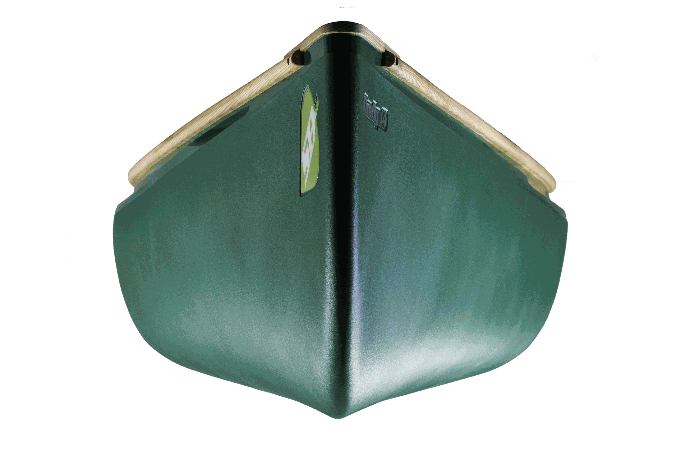
BELOW THE WATERLINE
As a rule, our canoe shape matters most when we're moving, and as soon as we start generating a bow wave, and even if we have trimmed our canoe to allow for this, the front and back of our canoe start handling quite differently.
Up to a point, a little rocker and a little U-shape in the profile in the bow of a canoe that's trimmed level and that's moving forward tends to improve a canoe's handling (true even in racing craft).
As a rule, we don't really gain from the same rocker or U-shape in the stern of a canoe that's trimmed level, and for improved tracking (directional stability), we might even want more of a V-shaped profile.
Most traditional canoes have some form of shallow arch in the centre section. Where this is more pronounced, a novice might find the hull a little "tender" (easy to wobble from side-to-side)… but a more experienced canoeist might say the hull feels more responsive. In waves, similarly-proportioned canoes with slightly more pronounced arch in the mid-section tend to feel more comfortable AND more stable.
Top-tip: what's below the waterline changes as we rock our canoe from side-to-side. Canoes with flare up to the gunwales can get wider and more stable as they are heeled further to one side, but tumblehome (see below) can make a canoe narrower and less stable when heeled.
ABOVE THE WATERLINE
In almost all real-world paddling, the design of a canoe above the waterline is at least as important as the shape below the waterline… and that's not simply because the boat that's above the waterline is exposed to any breeze.
Up to a point, seaworthiness and sea-kindliness can both be improved by increasing flare (ever increasing width) in the sidewall in the first third of the canoe, so that we go up and over waves instead of punching through them
Flare in the sidewalls in the centre section can also massively aid both seaworthiness and stability in waves, but many who prefer to sit choose to have the widest part of the canoe almost at the waterline for primary (boat flat) stability - which can become uncomfortable or challenging in waves.
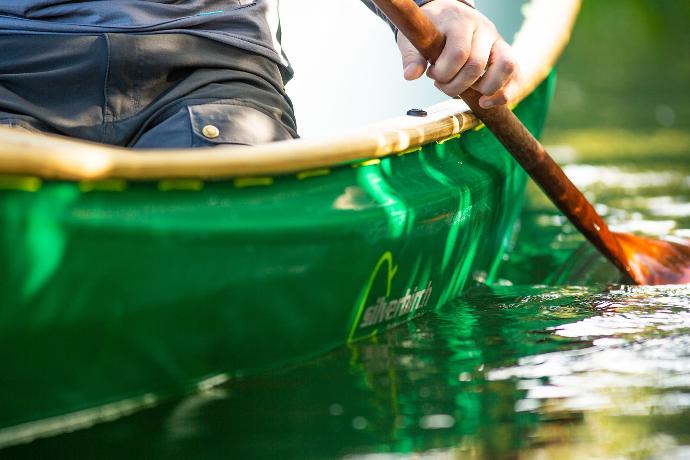
Above the widest point of the canoe, we might seek tumblehome, with the sidewall tucked-in up to the gunwales. This can make forward paddling considerably more comfortable and efficient, especially if we choose a low seating position in order to feel stable when seated. Tumblehome can be combined with flare in shouldered-tumblehome to find a balance between efficiency and seaworthiness.
Our final decision about sidewall above the waterline might be about depth and freeboard. As a rule, this is an area where we go "as low as possible, but no lower" - because every bit extra adds weight… and because beyond a certain point, we get very little added value!
In practice, many enthusiasts trim their canoes bow-light. This tends to exaggerate bow rocker (perhaps reducing the waterline length of the canoe, and making the canoe easily blown-around). It also drops the stern (perhaps making the tail feel less responsive). Solo canoeists who also put their canoe on edge can further shorten the waterline length of their canoe, and can massively increase the apparent rocker.


Choosing a Canoe: A Decision with Consequences!